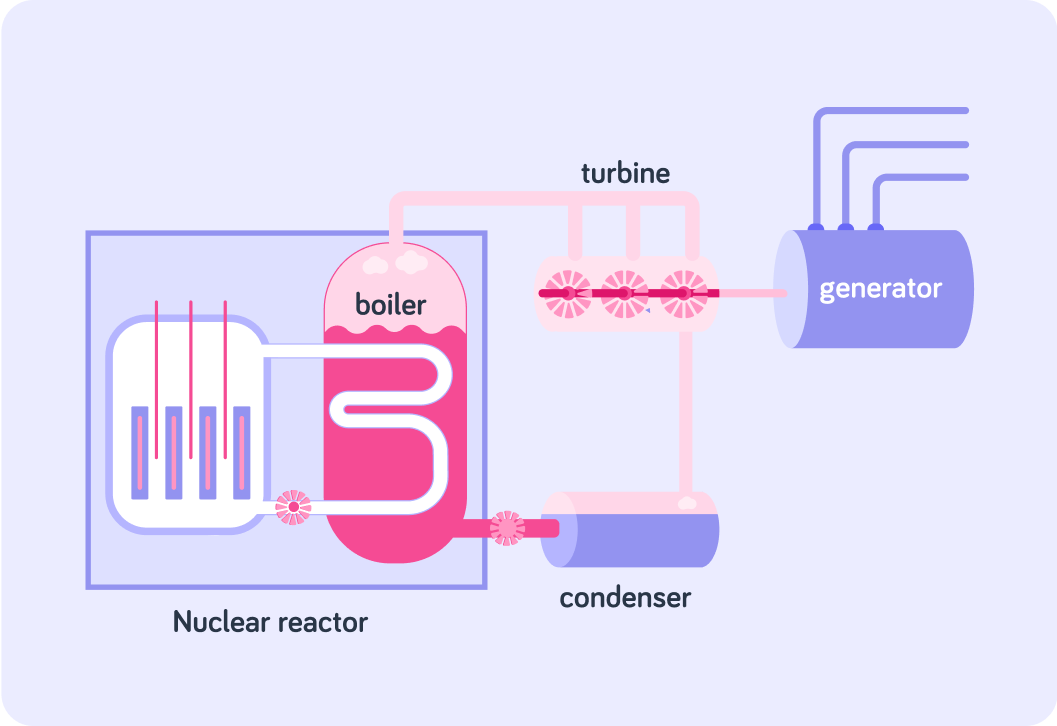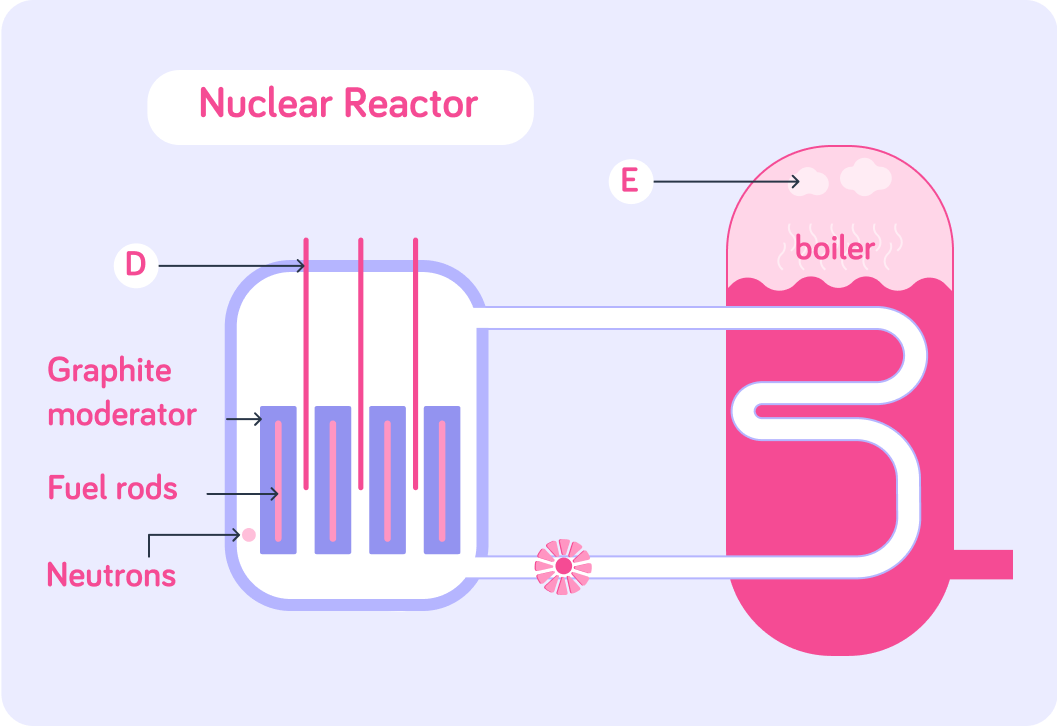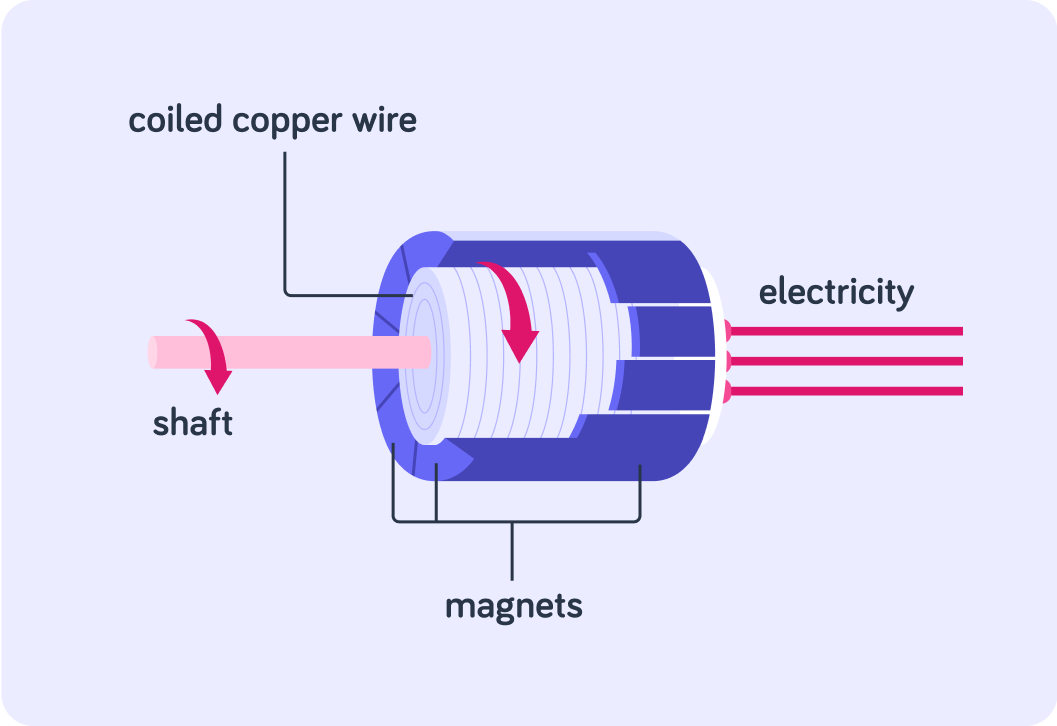YOU ARE LEARNING:
Generation of Electricity

Generation of Electricity
Nuclear power stations use the thermal (heat) energy from a chain reaction to generate electricity.
Conventional power stations use fossil fuels as an energy source to generate electricity. What do nuclear power stations use for fuel?

A nuclear reactor is a bit like a very large kettle. What do you think gets heated up in a nuclear reactor?

The diagram shows the key parts of a nuclear power station. In which part do you think the fission reaction of uranium takes place?


Nuclear fission is induced in the reactor. When a uranium nucleus is split, what type of particle does it release? It is labelled A in the diagram.


If you line up a pack of dominos and knock the first one over, it will make the next one fall and so on. Similarly, the neutrons released by the fission reaction can cause further fission events. What do we call this?


For the released neutrons to take part in a chain reaction, they must strike the uranium fuel rods. But first they need to pass through something that moderates their speed. Can you recall what these are called? They are labelled C in the diagram.


The speed of the neutrons is controlled by the graphite moderators.
This ensures that the neutrons bombard the uranium at the right speed to cause fission and result in a chain reaction.

We also need to make sure that we keep the reaction under control. What is labelled D that allows us to do this?


So the control rods absorb some of the neutrons before they can reach the uranium fuel rods. What does this do to the rate of the chain reaction?
A) Speeds up the reaction. B) Slows down the reaction.
Answer A or B.


The control rods help to control the speed of the chain reaction.
If the control rods are lowered, the reaction slows dow because the neutrons are absorbed. If the rods are raised, the reaction speeds up because the neutrons have nothing stopping them from getting to the uranium fuel rods.

The energy that gets released during fission heats up water in the boiler. What do you think is pumped out of the boiler and is labelled E?


So energy released from fission is used to heat up water to produce steam. Which option shows the correct energy transfer that takes place?

So fission releases nuclear energy which is used to heat up water and create steam. This is then used to turn turbines. This process transfers the thermal energy of the steam into what type of energy?

Have another look at the the diagram showing how electricity is generated in a nuclear power station. The steam from the boiler turns the turbines, so the steam has...
A) very high pressure. B) very low pressure.
Answer A or B.


The steam turns the turbines which spins the generator.
This is what produces electricity.

The steam is cooled in the condenser and changes state, from gas back into liquid. This is clever, because it means that the water can be ____________.


You might have learnt already that a voltage can be created by moving a conductor in a magnetic field. This is called electromagnetic induction. In other words, kinetic energy is converted into electrical energy. In a nuclear power station, this happens in the generator.
This diagram shows a simplified generator. The basis of it is similar to a generator in a nuclear power station. You can see that the shaft turns the core of coiled copper surrounded by magnets. What is it that turns the shaft?
A) Reactor core B) Turbine C) Steam
Answer A, B or C.


The movement of a conductor (the copper wire) in a magnetic field creates a potential difference (voltage).
This is how electricity is generated.

The generator produces a current which constantly changes direction. We call this...

Let's sum up how electricity is generated in a nuclear power station
First, fission is induced and releases nuclear energy
This is transferred to thermal energy by heating up water and creating steam.
The steam then turns a turbine
The thermal energy from the steam is converted to kinetic energy.
Finally, the turbine drives a generator and induces an alternating current
This electricity then enters the national grid and eventually arrives at our homes.
